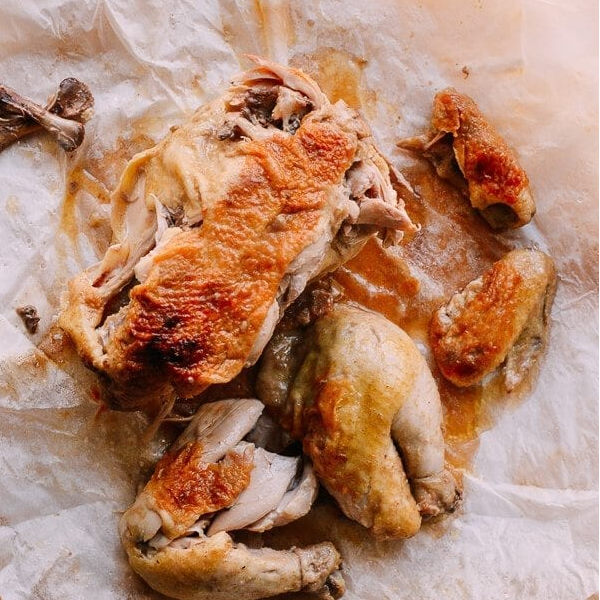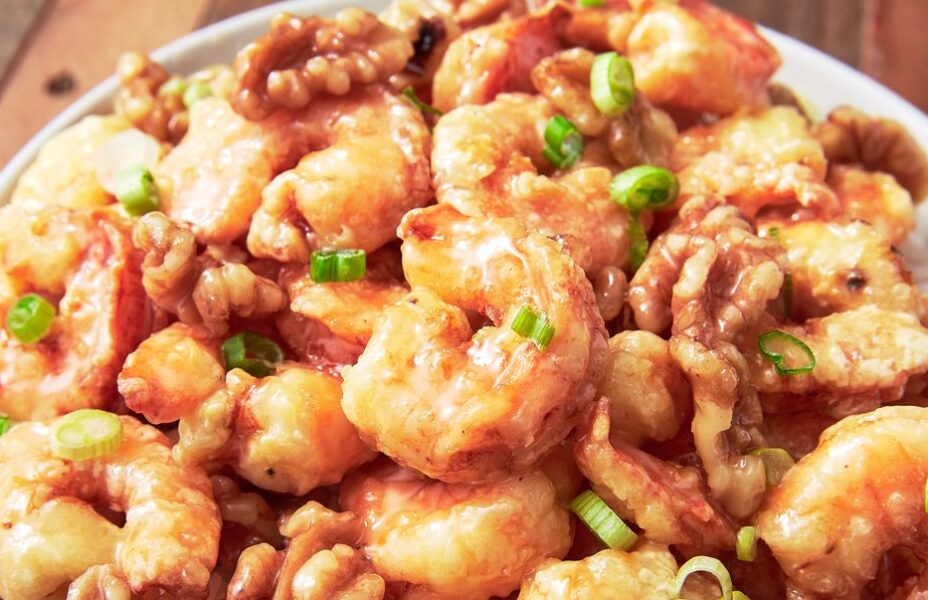Origins of Salt Baked Chicken
This is the real deal, true blue recipe for Salt Baked Chicken. As for the origin of the dish, there are a few folk tales out there that people will tell you, but I like this one the best:
As the story goes, a reliable salt merchant was gifted with a live chicken after a job well done. Due to the many days it would take for him to journey home, he decided to dress the chicken and wrap it with salt to preserve its freshness.
But while traveling, he could not resist, and decided to roast it in salt due to his lack of cooking equipment. He was so delighted with the taste that he told his wife about his newfound creation upon arriving home.
His wife then carefully followed the steps and re-created it, and that’s how Salt Baked Chicken was born. It’s not a very progressive story, and who can say if it’s fact or fiction (or maybe historical fiction?) but I do hope that you’ve enjoyed this little bit of poultry drama.
A Traditional Recipe
This recipe is how Salt Baked Chicken is traditionally made. In stores you can find a pre-prepared salt baked powder seasoning packet that many people like to use pictured below.
And I’m not at all exaggerating when I say that we, the Woks of Life, all think that it is the tastiest chicken we’ve ever had–as in compared to all the chicken we have collectively ever eaten (which is a lot). It’s an enormous bill of approval, because we’ve posted many pretty delicious chicken recipes over the years, but this Salt Baked Chicken still outshines them all.
A Note on Cookware
So now I know you are excited, but before we start, let me talk briefly about what cookware you should use for this recipe. A Chinese clay pot is the more traditional choice, but it will very likely crack during cooking.
I used my heat-tempered clay pot thinking that it would be safe, but after using it to test this recipe a few times, it’s now cracked! This dish is featured on the Chinese TV documentary series, A Bite of China. It’s like Planet Earth, but instead of animals, it’s about the many forms of Chinese home-cooking.
It’s spectacular cinematography and immensely enjoyable entertainment, and I encourage you all to watch—with English subtitles of course. There’s one episode that features a local Hakka man making this chicken just in a regular wok with a lid.
He cooks the salt in the wok first, makes a well in the middle of the hot salt, puts the wrapped chicken in, then piles the salt around the chicken and over the top, and simply covers it with the wok lid. Next time I make this, I will be following his method, so I don’t have to keep replacing my clay pot!
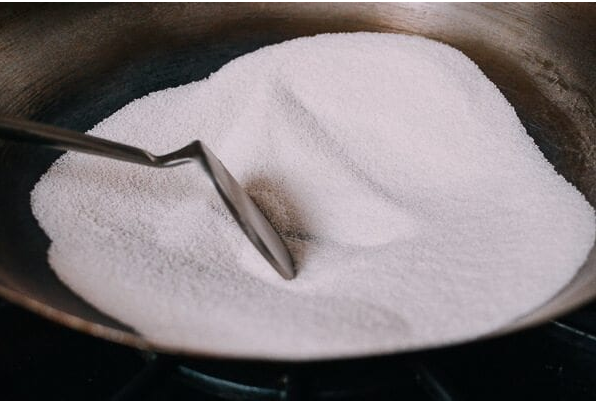

Key Ingredient: Sand Ginger Powder
One last note. Sand ginger powder (沙姜粉, sha-jiang-fen) is not the same as ginger powder. For this recipe, sand ginger powder is just as important as the salt. It cannot be substituted or omitted.
Which makes me wonder, if the folktale of how this recipe was created is true, did the merchant have the sand ginger powder with him, or was it added by another smart person in the years after? Poultry drama season 2 might be in order…
Cooking Tips
- You should have the same amount of coarse sea salt by weight as the weight of your chicken. If you are cooking a 4-pound chicken, then you will need 4 pounds of salt.
- After cooking, once the salt is cooled, discard any of the dis-colored salt (you’ll know because it’s been browned either by heat or exposure to the juices from the chicken). Save the rest, and reuse it for next time.
- After de-boning the chicken, the chicken bones make a wonderful stock or soup base. Do not discard them, please!!! You’ll be missing out on half the value of the recipe, trust me.
Salt Baked Chicken: Recipe Instructions
Rinse the chicken under cold running water. Shake off the excess water and pat the chicken dry with paper towels or a clean dish cloth.
Brush the Shaoxing wine all over the chicken, including the cavity. Next, combine the sand ginger powder, ground white pepper, and 2 teaspoons salt. Rub the mixture all over the chicken, including the cavity.
Now set the chicken on a wire rack, and place it over a tray to catch any drippings. It’s best if you can sit the chicken upright so the liquid in its cavity can drip out. You can use a drinking glass to prop it up. Leave the chicken uncovered and let marinate overnight in the refrigerator. The objective is to dry out the chicken skin.
The next day, take the chicken out of the refrigerator for at least one to two hours before cooking, so the chicken can come up to room temperature. Insert the ginger slices into the cavity and brush the chicken skin with oil. Next, tie up the drumsticks with kitchen twine.
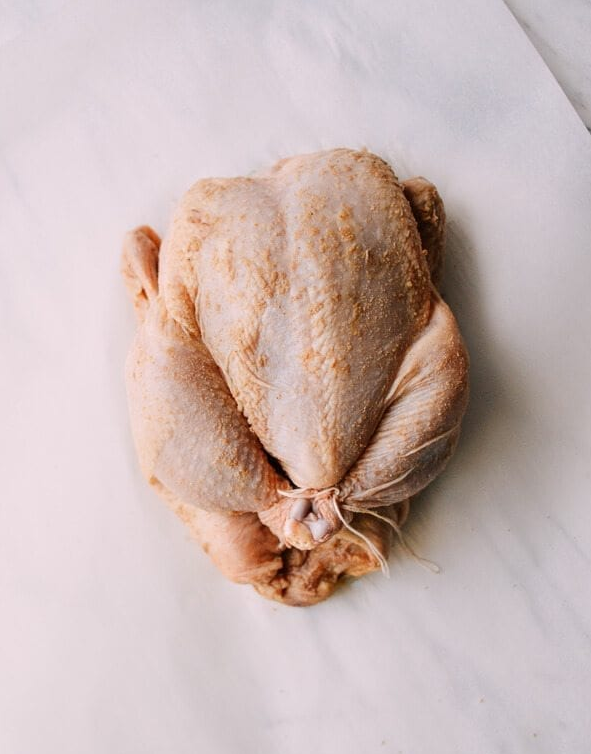
Finally, wrap the chicken with a large piece of parchment paper, then wrap it again with a second piece of parchment with the opening on the breast side. Set the chicken aside.
Now “stir-fry” the rest of the salt in a clean dry wok for about 15 minutes, using medium heat until the salt turns light brown. The salt gets very hot, so be careful not to burn yourself or stir too vigorously.
Next, fill a wok or Dutch oven with about a ½-inch of hot salt spread evenly across the bottom. Position the chicken with the breast side up in the center of the pot.
Next, add the rest of the hot salt onto the chicken to make sure it’s completely covered.
Top your vessel of choice with the lid, and cook over medium heat for 35 minutes. Then turn off the heat, and let it sit on the stove, covered, for another 30 to 40 minutes until the salt is warm to the touch.
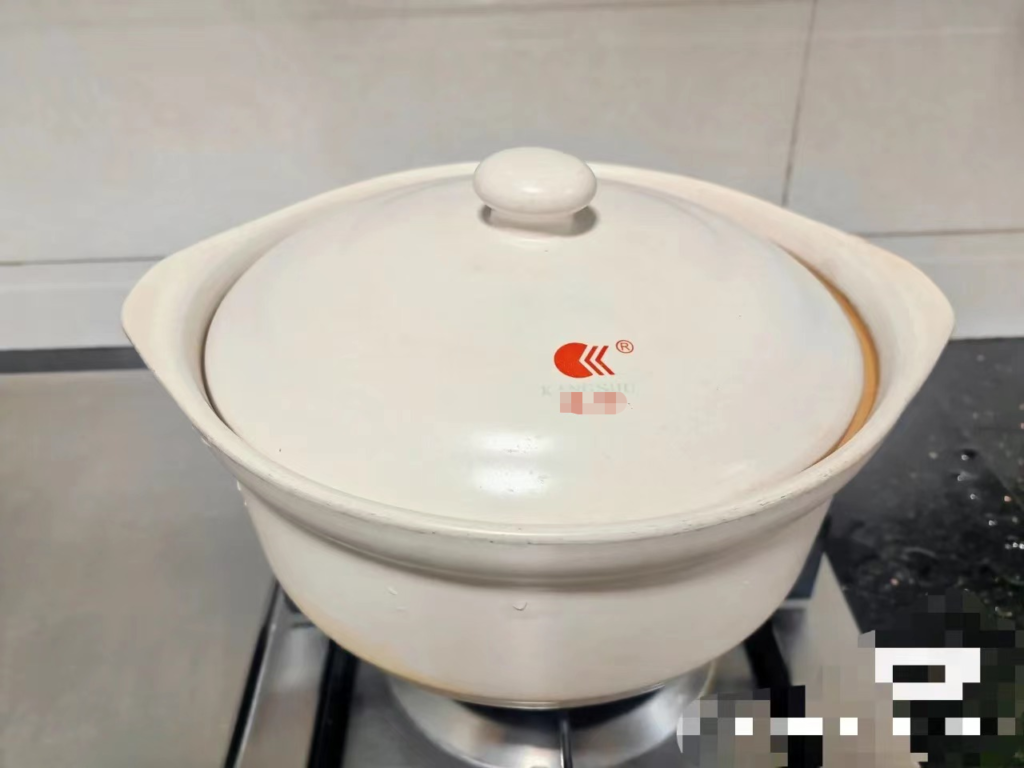
Once the salt is warm to the touch, use a wooden spoon or a spatula to carefully lift the chicken out of the salt. Be very careful–the chicken is still very hot despite sitting with the heat off for 30-40 minutes.
Carefully unwrap the parchment paper, and let it cool slightly until it’s not too hot to handle.
As for how to serve the chicken, this dish is usually served with the meat deboned and pulled apart. You don’t have to follow these steps, but your diners (in our case, Sarah) will appreciate your effort! Plus, the chicken bone and carcass do make a lovely broth.
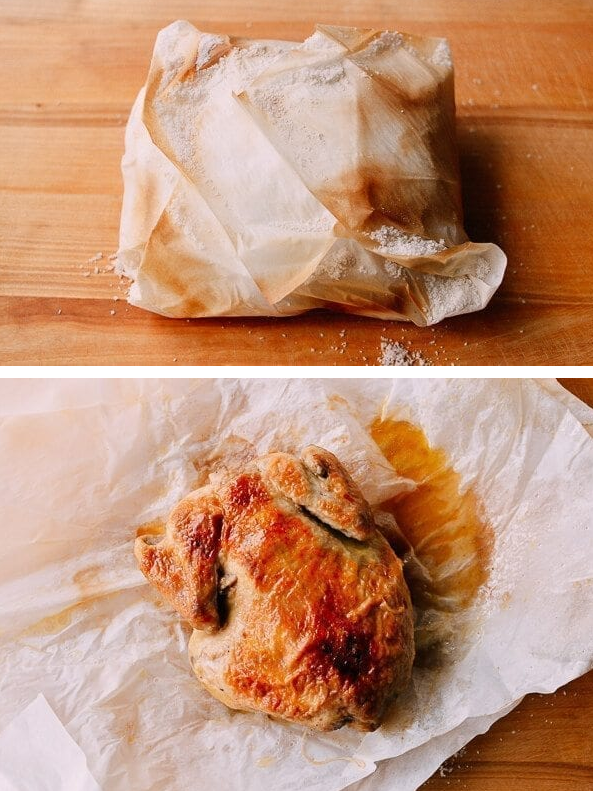
As you pull the meat off the chicken, there will be a lot of juice–do yourself and your diners a favor by pouring the juice over the chicken after it’s plated!
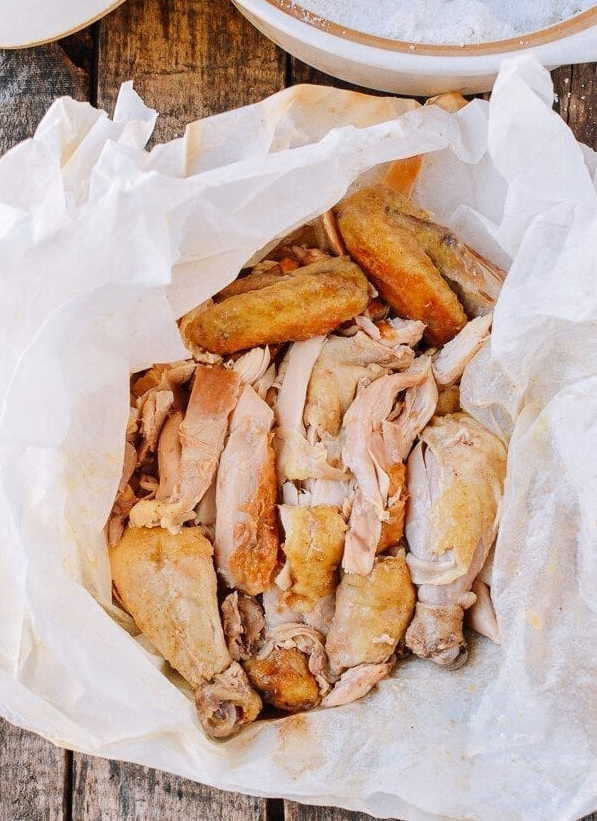
Kam’s court, a chinese restaurant in Charmhaven, which was established in 1992. A friendly, family restaurant that has always been a good party place for family gatherings. We provide delicious and popular Chinese cuisine and are licensed. We invite you to come and enjoy our warm and friendly hospitality.

